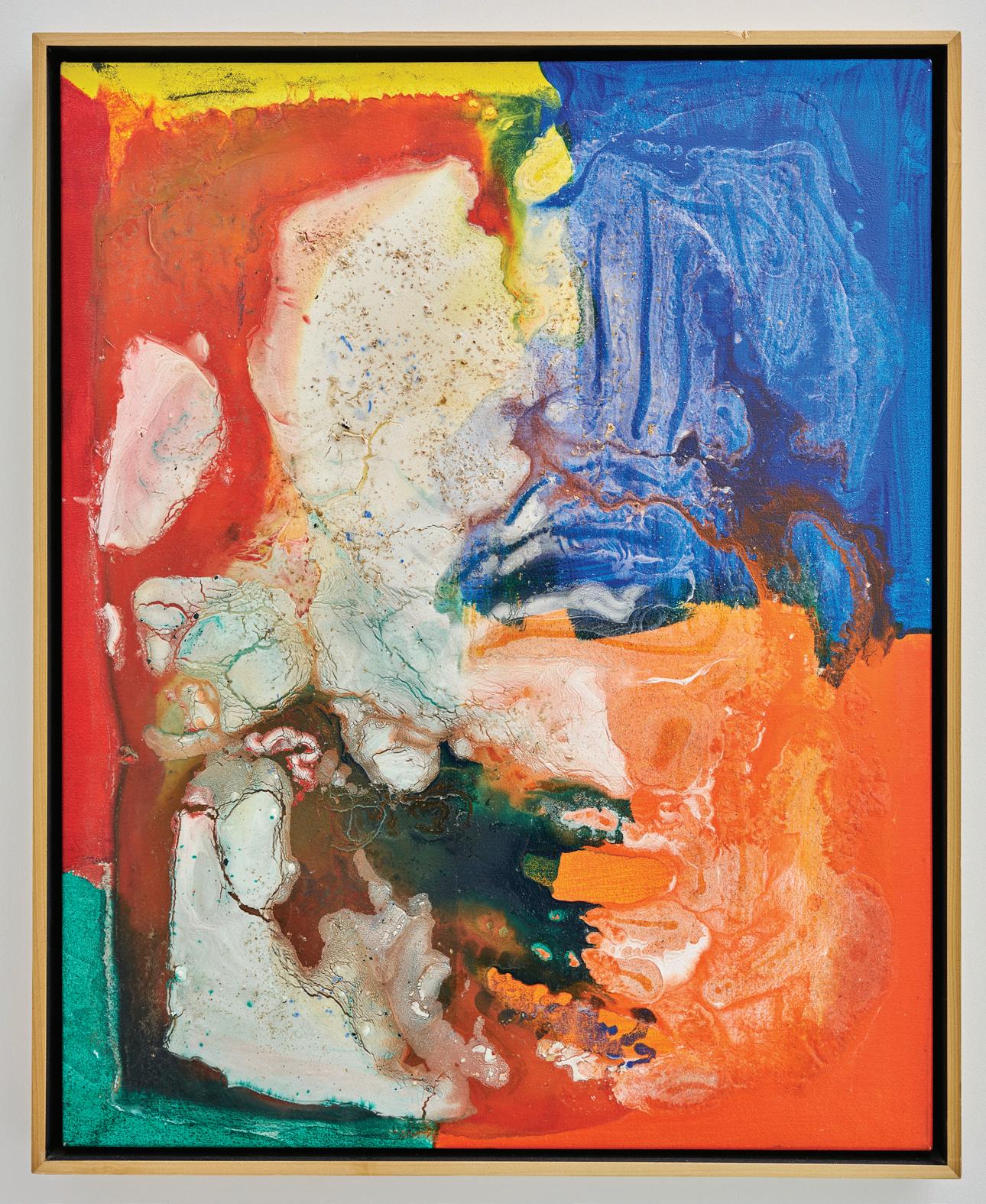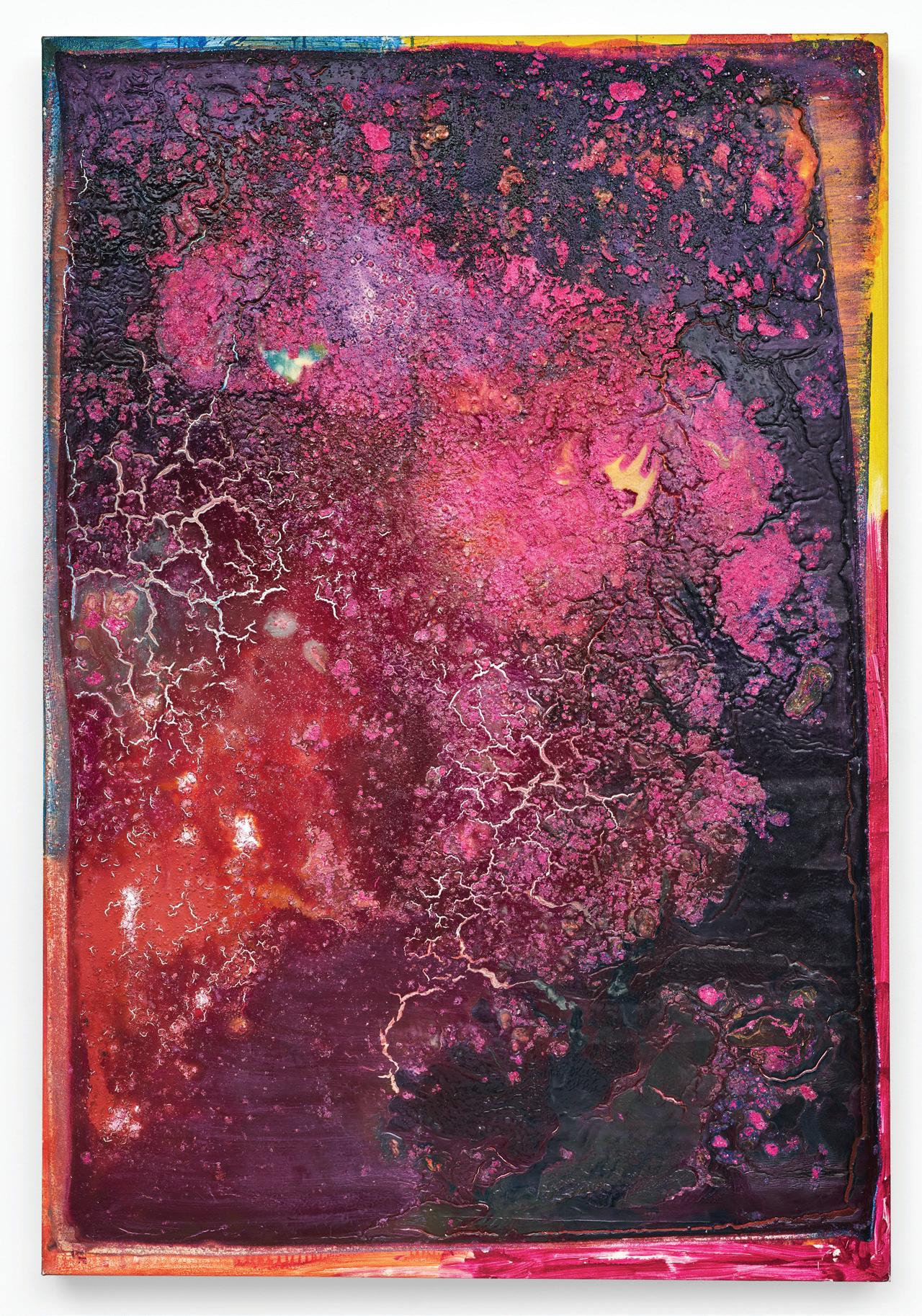Organic: Imagery and Processes Inspired by the Natural World


DAVID RICHARD GALLERY ARLINGTON WEITHERS
ISBN: 978-1-955260-62-6

Front Cover: Installation Arlington Weithers Organic: Imagery and Processes Inspired by the Natural World at David Richard Gallery
Title Page: Installation Arlington Weithers Organic: Imagery and Processes Inspired by the Natural World at David Richard Gallery
Back Cover: Installation Arlington Weithers Organic: Imagery and Processes Inspired by the Natural World at David Richard Gallery
Arlington Weithers Organic: Imagery and Processes Inspired by the Natural World
April 25 – June 9, 2023


Published by:

David Richard Gallery, LLC, 526 West 26th Street, Suite 311, New York, NY 10001 www.DavidRichardGallery.com
212-882-1705 | 505-983-9555
DavidRichardGalleries1 DavidRichardGallery
Gallery Staff:
David Eichholtz and Richard Barger, Managers
All rights reserved by David Richard Gallery, LLC. No part of this catalogue may be reproduced in whole or part in digital or printed form of any kind whatsoever without the express written permission of David Richard Gallery, LLC.
Artwork: © 2000 - 2017 - Arlington Weithers
Catalogue: © 2023 David Richard Gallery, LLC, New York, NY
Essay: by David Eichholtz
Catalogue Design: David Eichholtz and Richard Barger, David Richard Gallery, LLC, New York, NY
Artwork © Arlington Weithers
Images by Yao Zu Lu
DAVID RICHARD GALLERY
Organic: Imagery and Processes Inspired by the Natural World


ARLINGTON WEITHERS
DAVID RICHARD GALLERY
ARLINGTON WEITHERS
Organic: Imagery and Processes Inspired by the Natural World
David Richard Gallery is pleased to present exuberant, colorful, and abstract paintings by Arlington Weithers in his first solo exhibition with the gallery and first solo show in New York since 2006. This presentation, Organic: Imagery and Processes Inspired by the Natural World, includes 12 paintings dating from 2000 to 2004 with one large horizontal painting from 2017 that is part of a similar, but later series of large format works produced from 2015 to 2018 that will be the subject of a separate, later presentation. The paintings in this current exhibition range in sizes from 60 x 50 inches to 92 x 73 inches and up to 65 x 114 inches with smaller works measuring 30 x 24 inches to 36 x 30 inches.
About Weithers’s Paintings and Process:
Weithers, a black artist from Guyana, is inspired by colors, forms, and processes as well as the interactions between each of them in the natural world. Thus, the hues and shapes reference plants, flowers, seeds, landscapes, egg laying habits of reptiles, and celestial skies to name a few. However, his paintings are nonobjective abstractions, not figurative nor narrative per se. Thus, his creations not only have an organic vibe, but are literally organic by incorporating sand, volcanic ash, and coconut tree bark, among other earthy materials onto the surfaces. His process is also organic, emulating the weather patterns and resulting impact on the Guyanese landscape. Guyana is located below sea level, therefore, the land fills with rain during storms and then as it dries, the soil cracks and creates fissures on the surface. At first glance, many of the paintings read as Abstract Expressionistic canvases, However, while the poured medium and large blocks of color may suggest influences of Color Field painting, the thick and impasto surfaces combined with sand, ash, and vegetative organic material provides stronger references to Matter Painting. More broadly, Weithers ‘s paintings are aligned with Art Brut and the diverse and encompassing arena of Art Informel.
Utilizing formalist approaches of pouring, staining, and brushing Weithers applies and distributes colorful hues in synthetic polymer emulsions, his medium of choice, combined with additions of organic materials from nature, glass beads, and dry pigment on canvas supports. The result is paintings that are exhilarating with an intensity, materiality, and immediacy that stimulates the viewer on many levels—visually, tactilely, and emotionally—creating
2
a strong reaction. The colors are bold and vibrant, as one would imagine given the tropical influences of his youth in Guyana. The surfaces are complex, both lush and dynamic with rhythm and movement from the colors and shapes migrating, morphing, and fusing across the canvases, bounded by the painted borders. Mentors, colleagues, and those who shared similar such sensibilities about pouring, staining and brushing pigment and medium include his life-long friend, artist, colleague and fellow Guyanese artist, Carl Hazelwood; Frank Bowling, another Guyanese artist with whom he worked as a studio assistant from 2011 to 2018 and more recently a friend; his teachers William T. Williams and Philip Pearlstein from Brooklyn College; not to mention the historical influences of Jules Olitski, Morris Louis, Helen Frankenthaler, and other Color Field painters.
Fragmentation of the surfaces from fissures and cracks reveals perceived and literal depth from underlayers of color and pattern. The large fissures and cracking result from the multiple and thick layers of medium and pigment poured on the surfaces of the canvases and the long drying process. This is a process that further adds to the organic nature of the resulting artworks as the drying and location of the fissures cannot be controlled nor predicted. Thus, a bit of Zen and “happy accidents” create aesthetic opportunities regarding what the fissures unmask and inspire the artist’s and viewer’s responses. The fissures are evocative of the works by and historical influences of artists Lucio Fontana and Alberto Burri who explored the surfaces of paintings as well as revealing the backside and all aspects of the support.
All the paintings in this presentation relate to Weithers’s Mazunte (Aztec word meaning “please deposit eggs here”) series from 2000 to 2004. A common feature among all the paintings are the painted borders that function as framing devices. Most paintings have a single border, but a few have multiple borders within borders. Formally, the borders are often painted with primary colors, generally located a few inches inside the perimeters, usually very painterly with diffuse and soft edges, but several have hard edge borders (such as Hancock Street Series: Snow Event, 2003). Certain paintings have only 2 sides with borders, generally vertical borders like Mazunte: Renee’s Angel, 2004. The smaller paintings in the series generally have much broader borders that confine and centrally locate the focal point (or, the “figure” against the perimeter ground) distinctly on the canvas surface. The borders and boundaries of paintings have been a topic that has intrigued artists since the 1960s, including Helen Frankenthaler, Larry Poons, Tony DeLap, and Howard Hodgkin among others.
3
The Mazunte and related series of paintings debuted in New York with an exhibition of mostly smaller sized canvases at the AFP Galleries in 2006. Holland Cotter noted in the New York Times in 2006 that the Mazunte paintings by Weithers in that exhibition ”. . . [Weithers’s] new pictures at the AFP Galleries, with their gemlike colors and fissured textures, are fabulous.” [1] Cotter also praised in the New York Times in 2004 “. . . Arlington Weithers’s glittering abstractions” (from the same Mazunte series) as one of a couple “surprises” from a group exhibition at the Brooklyn Museum [2].
[1] Holland Cotter, Artists in Midcareer and Beyond are Showing That Experience Matters, New York Times, 2006.
[2] Holland Cotter, Brooklyn-ness, a State of Mind and Artistic Identity in the Un-Chelsea, New York Times, April 16, 2004.
David Eichholtz New York, NY
4




Arlington Weithers
Mazunte: Creatures of the Sea , 2004
Acrylic polymer emulsion, pigments, sand & volcanic ash on canvas
30 x 24”
10

Arlington Weithers
Mazunte: Renee’s Angel , 2004
Acrylic polymer emulsion, pigments, sand & volcanic ash on canvas
96 x 66”
12

Arlington Weithers
Fire Next Time , 2017
Acrylic polymer emulsion, pigments, & glass beads on canvas
65 x 114”
14





Arlington Weithers
Cry of the Martyrs , 2004
Acrylic polymer emulsion, pigments, coconut tree bark, sand & volcanic ash
92 x 73”
20

Arlington Weithers
Hancock Street Series: Snow Even , 2003
Acrylic polymer emulsion & pigments on canvas
96 x 64”
22

Arlington Weithers
Pearly Gate-East , 2002
Acrylic polymer emulsion, pigments on canvas
36 x 30”
24

Arlington Weithers
Kensington Oval: A Sticky Wicket , 2002
Acrylic polymer emulsion
36 x 30”
26

Arlington Weithers
Throop Street Series: Cranberry Hue , 2003
Acrylic polymer emulsion & pigments on canvas
96 x 64”
28



Arlington Weithers
Neptune’s Cloud , 2000
Acrylic polymer emulsion & pigments on canvas on canvas
60 x 50”
32

Arlington Weithers
Mazunte: Rainbow Seeds , 2004
Acrylic polymer emulsion, pigments, coconut tree bark, sand & volcanic ash
92 x 73”
34

Arlington Weithers
Lightning Fields , 2000
Acrylic polymer emulsion, pigments & glass beads on canvas
72 x 60”
36

Arlington Weithers
Mazunte: Coco Haven , 2004
Acrylic polymer emulsion, pigments, coconut tree bark, sand, and volcanic a 92 x 73”
38




42
About Arlington Weithers:
After studying in Guyana with E. R. Burrowes and Vivian Antrobus, both outstanding local artists and teachers, Arlington Weithers moved to the United States in 1969. His concentration at the Art Students League in New York was on illustration, although he later received a BFA degree from Brooklyn College with honors in fine art and photography. At the college, independent study in Painting and Drawing was with William T. Williams and Philip Pearlstein. A full scholarship to the Skowhegan School of Painting and Sculpture, in Skowhegan, Maine, found him once again studying with William T. Williams and with visiting artist Claes Oldenberg among others. At the end of his stay, Weithers received best painter awards from both Skowhegan faculty and student juries. He was also given the McGhee Honors Award for creative work by Brooklyn College. Weithers lectured, conducted art therapy workshops and painted murals as an Artist-in Residence for the City of Dallas, Texas. Previous solo exhibitions of Mr. Weithers work have been held at Auburn University in Alabama, Brooklyn College Art Gallery, and the Guyana Embassy in New York. Through May 1994 his digital paintings were part of ‘Through My Window’, a yearlong exhibition at the Anchorage Museum of History and Art, in Alaska. Beginning in 1970 paintings and photography have been featured in many group shows including those at Light Gallery, New York; Harris Gallery, Houston, Texas; Pier 3, San Francisco; the Stewart Gallery, Dallas, and the S & L Gallery at the FIAC Exposition in Paris, France. [Courtesy and Copyright © Carl E. Hazlewood, New York.]


DAVID RICHARD GALLERY































